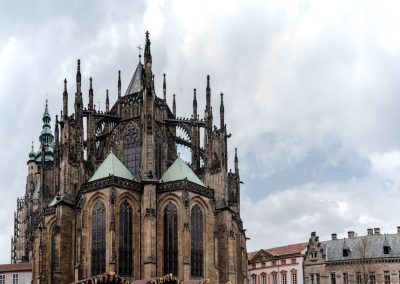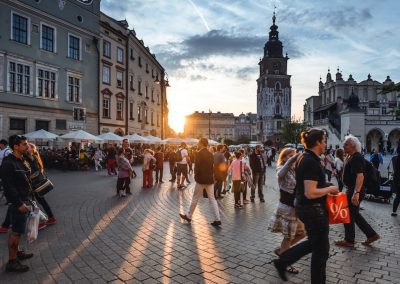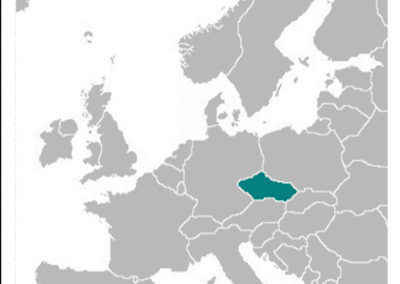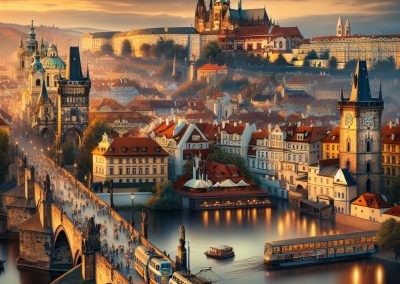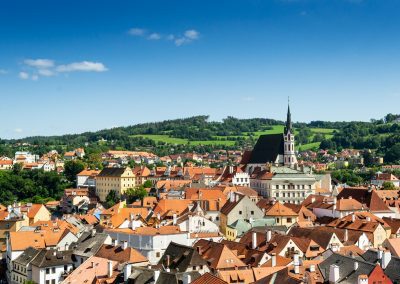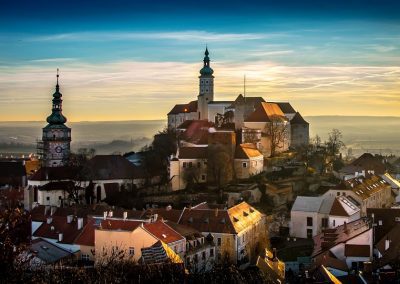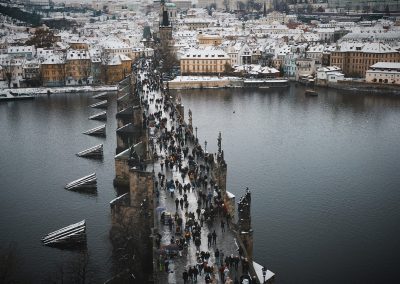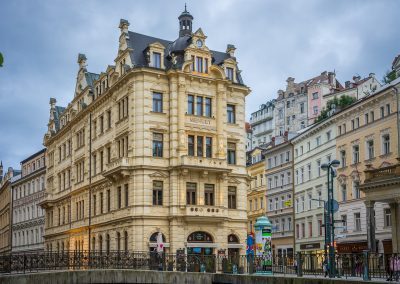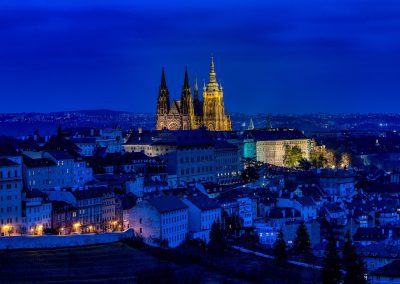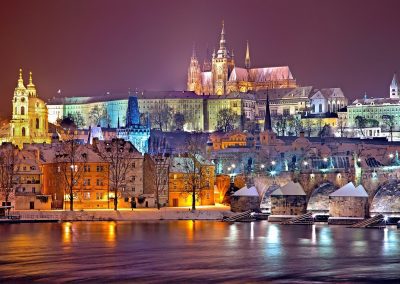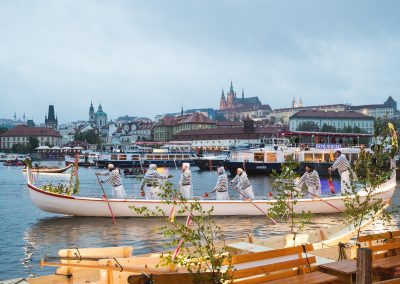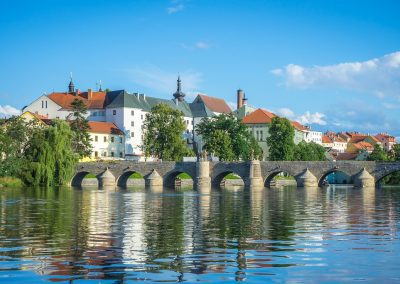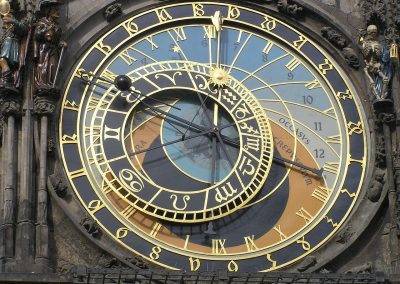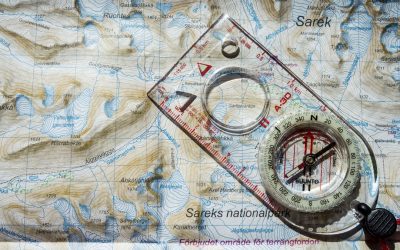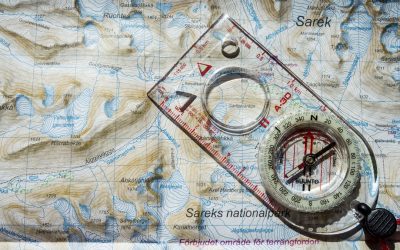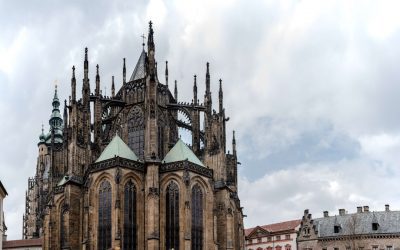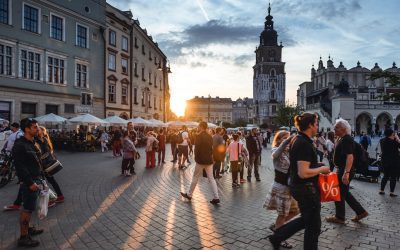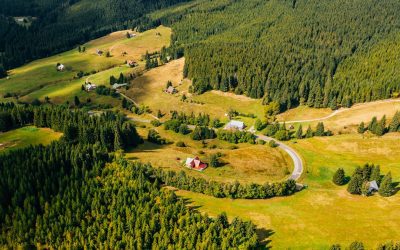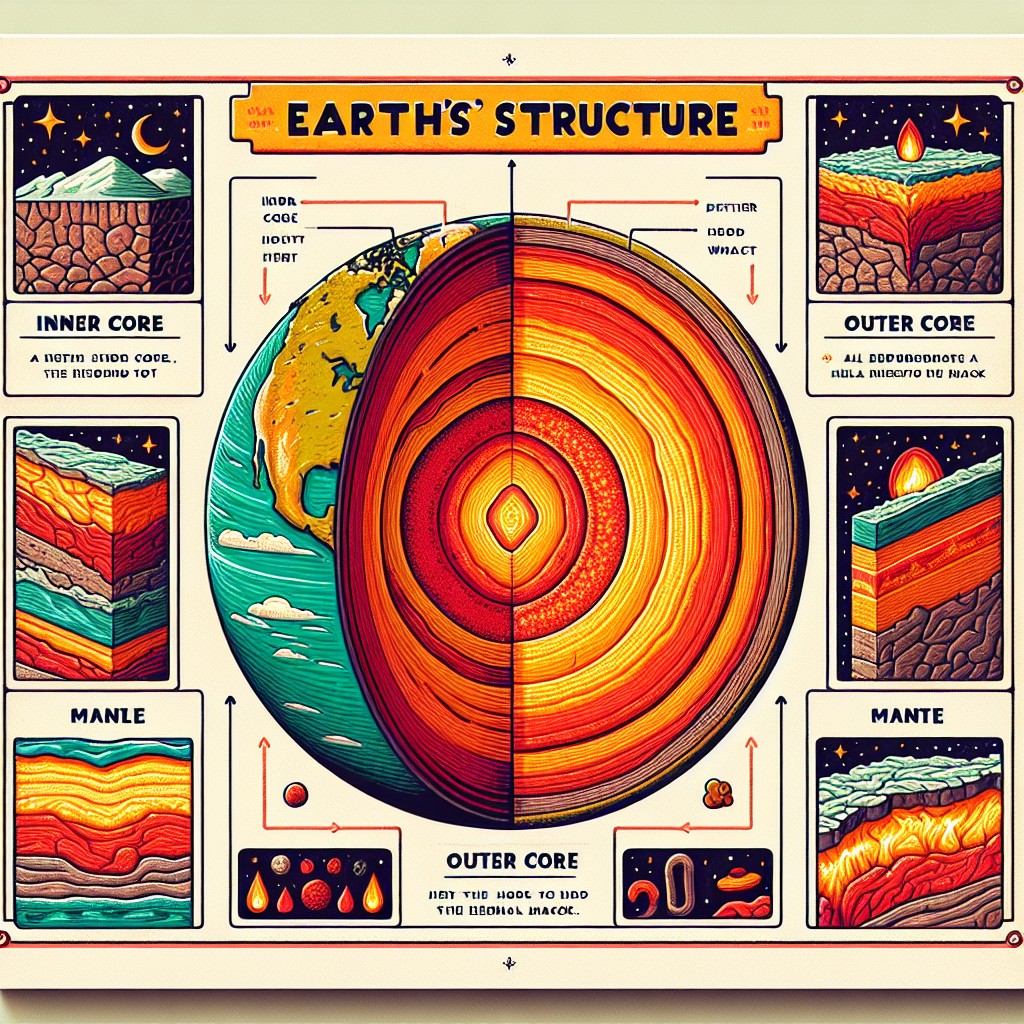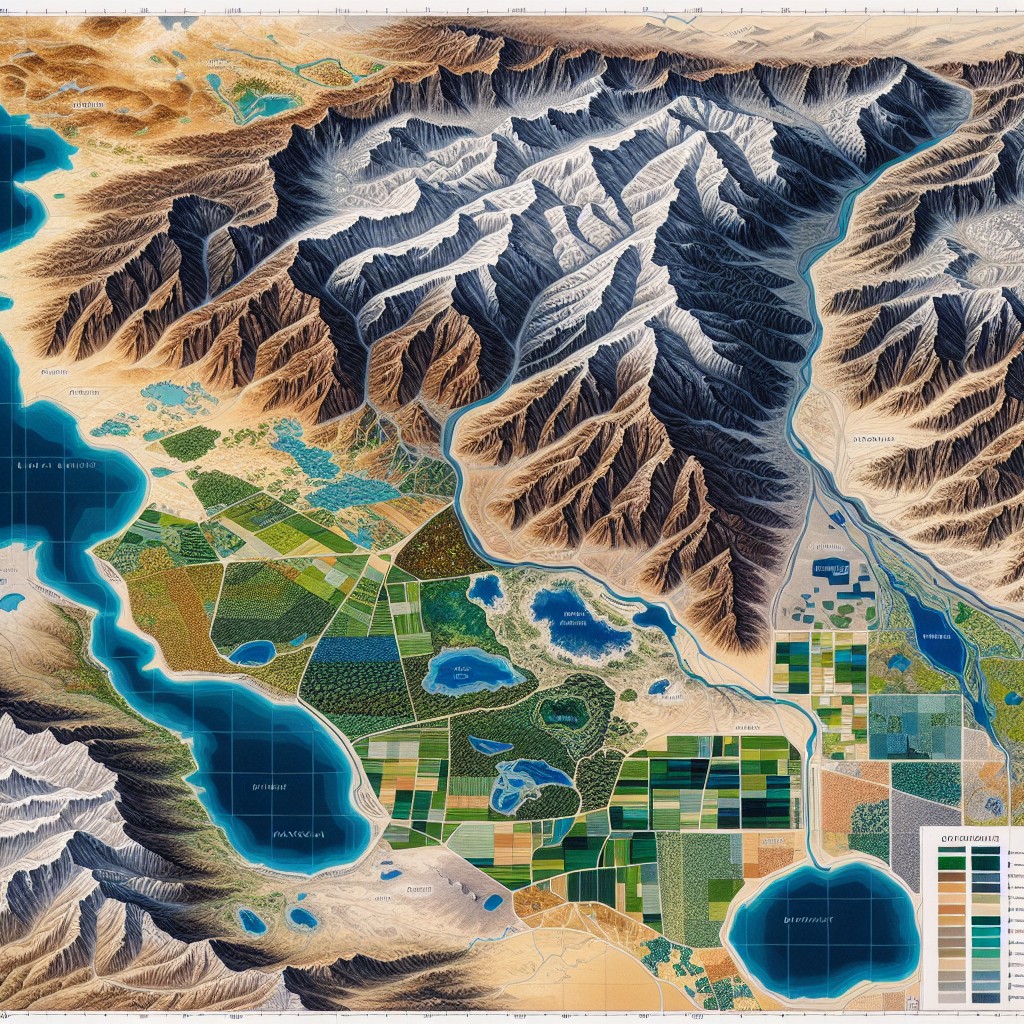Czech Republic
(Česká republika)

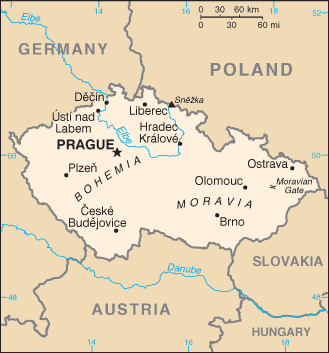
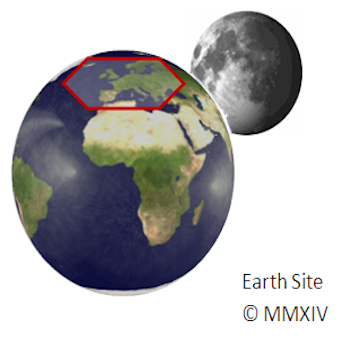
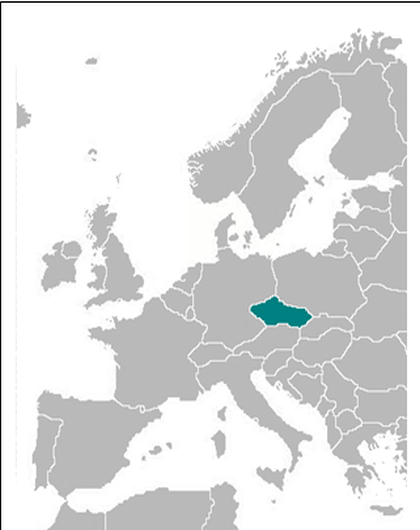

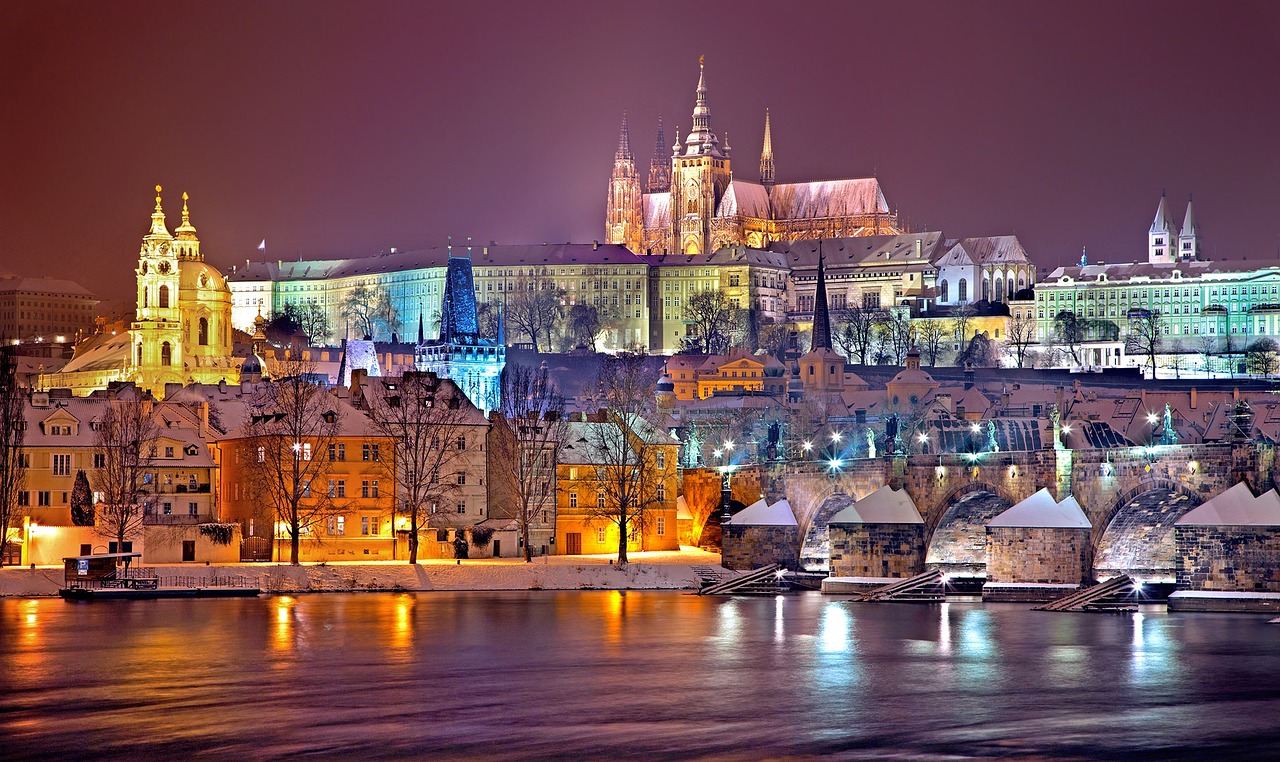
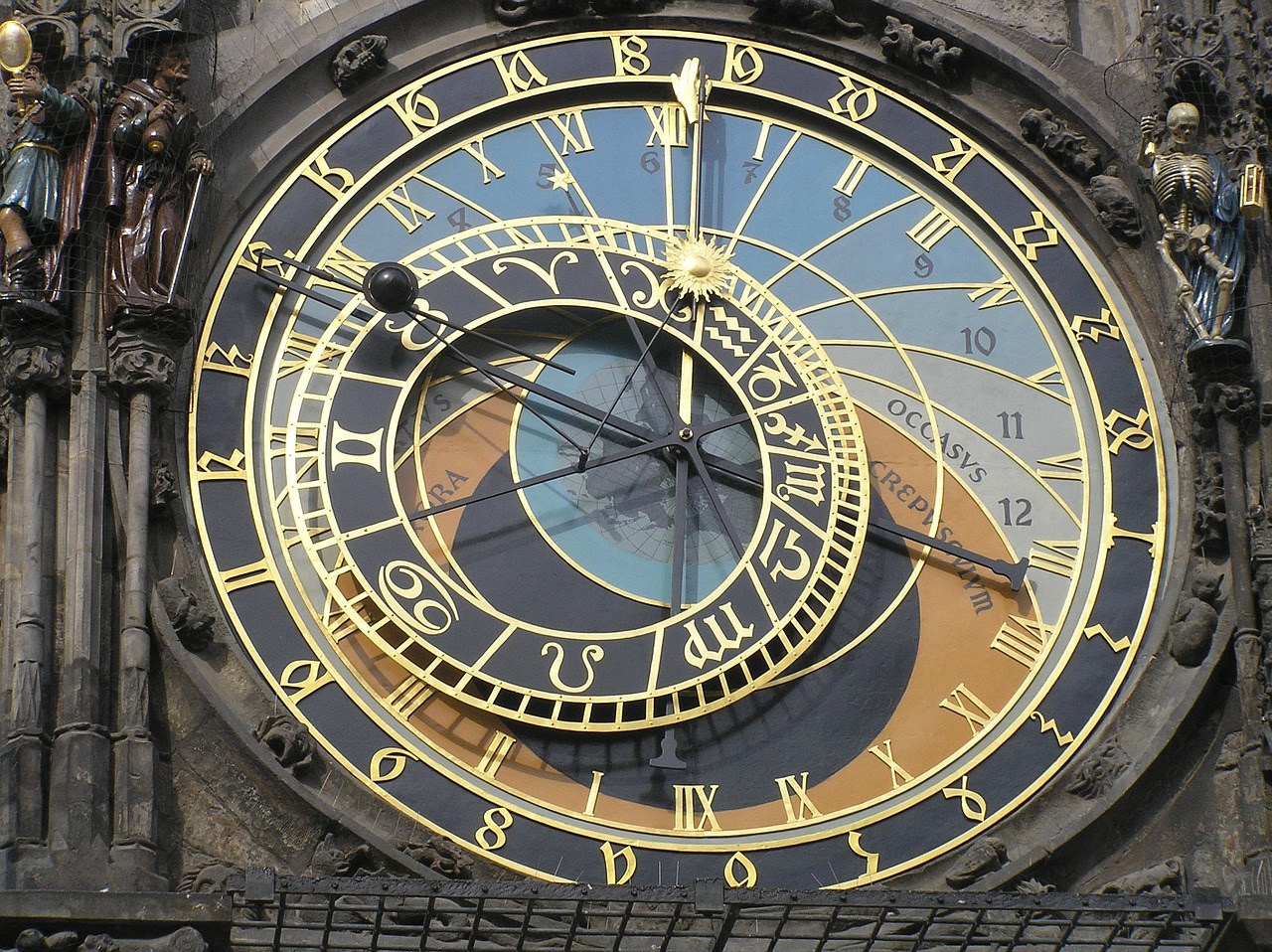
Capital: Prague
Population (Estimated July 2012): 10,177,300
Area: 78,865 km2 or 30,450 mi2
Currency: Koruna (Kč)
Official Language: Czech
Political Information: Parliamentary Republic
Official Religion: No Official Religion (approximately 26.8% of the population are Roman Catholic, 2.1% are Protestant, 3.3% have other religious beliefs, 8.8% have unspecified religious beliefs and 59% are unaffiliated)
Highest Mountain: Sněžka at 1,602m or 5,256ft
GDP Official Exchange Rate (OER is more precise at gauging a country’s economic power)
(Estimated 2011): $220.3 billion (US$) or (GBP)
GDP (OER) Per Capita (per member of the population estimated 2011): (US$) or (GBP)
GDP Purchasing Power Parity (PPP is good for gauging living conditions and use of resources but is not as accurate as OER. This data has been calculated based on the sum value of all goods and services produced in the country valued at prices prevailing in the United States)
(Estimated 2011): $272.2 billion (US$) or (GBP)
GDP (PPP) Per Capita (per member of the population estimated 2011): $25,900 (US$) or (GBP)
Time Zone (GMT/UTC): +1:00
Wildlife:
Counties/Provinces/States: 13 regions (kraje, singular – kraj) and 1 capital city* (hlavni mesto); Jihocesky (South Bohemia), Jihomoravsky (South Moravia), Karlovarsky, Kralovehradecky, Liberecky, Moravskoslezsky (Moravia-Silesia), Olomoucky, Pardubicky, Plzensky (Pilsen), Praha (Prague)*, Stredocesky (Central Bohemia), Ustecky, Vysocina, Zlinsky
Leaders: Vàclav Klaus as President with Petr Nečas as Prime Minister.
Sources: CIA World Fact Book, Encyclopaedia Britannica.
Czech Republic
The Czech Republic, located in the heart of Europe, is a country that offers a rich history, stunning architecture, and a vibrant culture. Nestled between Germany, Austria, Slovakia, and Poland, the Czech Republic is known for its picturesque landscapes, charming towns, and bustling cities. The country’s capital, Prague, is a popular tourist destination and is often referred to as the “City of a Hundred Spires.”
With a population of over 10 million people, the official language spoken in the Czech Republic is Czech. However, English is widely spoken in major cities and tourist areas. The country has a temperate climate with warm summers and cold winters. The best time to visit the Czech Republic is during the spring and autumn months when the weather is mild and pleasant.
History of the Czech Republic: From Bohemia to the Velvet Revolution
The history of the Czech Republic is long and complex, dating back to ancient times. The region was originally inhabited by Celtic tribes before being conquered by the Roman Empire. In the 9th century, the Kingdom of Bohemia was established and became an important political and cultural centre in Europe.
During the Middle Ages, Bohemia was ruled by various dynasties, including the Přemyslid dynasty and later the Luxembourgs. The region experienced a period of prosperity and cultural development during this time, with Prague becoming a major centre of trade and learning.
In 1526, Bohemia came under Habsburg rule as part of the Austro-Hungarian Empire. This marked a period of religious conflict between Catholics and Protestants, culminating in the Thirty Years’ War in the 17th century. The war devastated the region and led to a decline in its political and economic power.
After World War I, Czechoslovakia was created as an independent state. The country experienced a period of democracy and economic growth, but this was short-lived. In 1948, a communist regime was established, and Czechoslovakia became a satellite state of the Soviet Union.
The communist era lasted for over four decades, characterized by political repression and economic stagnation. However, in 1989, the Velvet Revolution took place, leading to the peaceful overthrow of the communist regime. Czechoslovakia transitioned to a democratic state and eventually split into two separate countries, the Czech Republic and Slovakia, in 1993.
Top Tourist Attractions in the Czech Republic: Castles, Beer and More
The Czech Republic is home to numerous tourist attractions that showcase its rich history and culture. One of the most iconic landmarks is Prague Castle, which dates back to the 9th century. This sprawling complex is the largest ancient castle in the world and offers stunning views of the city. Another must-visit site in Prague is the Charles Bridge, a historic bridge that spans the Vltava River. The bridge is adorned with statues and offers breathtaking views of the city.
In addition to Prague, there are many other historic towns in the Czech Republic that are worth exploring. Cesky Krumlov is a UNESCO World Heritage site known for its well-preserved medieval architecture. The town’s castle and charming streets attract visitors from around the world. Other notable towns include Kutna Hora, famous for its bone chapel, and Telc, known for its picturesque square.
The Czech Republic is also renowned for its beer culture. The country has a long brewing tradition, and Czech beer is considered some of the best in the world. Visitors can take brewery tours and sample different types of beer, including the famous Pilsner Urquell. Additionally, nature lovers can explore the stunning landscapes of Bohemian Switzerland National Park, which features sandstone cliffs, deep forests, and picturesque hiking trails.
Czech Cuisine: Traditional Dishes and Delicacies to Try
Czech cuisine is hearty and flavorful, with a focus on meat, potatoes, and dumplings. One of the most popular dishes is goulash, a stew made with beef, onions, and paprika. It is often served with bread dumplings, which are soft and fluffy. Another traditional dish is roast pork with sauerkraut and dumplings. The pork is slow-cooked until tender and served with tangy sauerkraut and savoury dumplings.
Fried cheese is a popular street food in the Czech Republic. It is made by coating a slice of cheese in breadcrumbs and frying it until golden and crispy. It is typically served with tartar sauce or ketchup. Potato pancakes, known as bramboraky, are another delicious Czech speciality. They are made from grated potatoes mixed with flour, eggs, and spices, then fried until crispy.
No visit to the Czech Republic would be complete without trying the local beer. Czech beer is known for its high quality and rich flavour. Pilsner Urquell, Budweiser Budvar, and Staropramen are some of the most popular brands. Wine lovers can also enjoy Czech wines, particularly those from the Moravian region.
For dessert, trdelnik is a must-try treat. This sweet pastry is made by wrapping dough around a cylindrical spit, and then grilling it over an open flame. It is typically dusted with sugar and cinnamon and can be filled with ice cream or Nutella. Other popular desserts include apple strudel, honey cake, and fruit dumplings.
Prague: The City of a Hundred Spires and More
Prague, the capital city of the Czech Republic, is a vibrant metropolis that offers a mix of history, culture, and modern amenities. The city is known for its stunning architecture, with Gothic, Renaissance, and Baroque buildings lining its streets. Prague’s historic centre is a UNESCO World Heritage site and is home to many of the city’s top attractions.
Prague is divided into several neighbourhoods and districts, each with its own unique character. The Old Town, or Staré Město, is the heart of the city and is home to famous landmarks such as the Astronomical Clock and the Old Town Square. The Lesser Town, or Malá Strana, is located on the other side of the Vltava River and is known for its charming streets and historic buildings.
One of the best ways to experience Prague’s beauty is by visiting its viewpoints and photo spots. The Prague Castle complex offers panoramic views of the city, while Petrin Hill provides a peaceful retreat with stunning vistas. The Charles Bridge is also a popular spot for photographers, especially during sunrise or sunset.
While Prague’s main attractions are well-known, there are also many hidden gems and off-the-beaten-path attractions to discover. The Vysehrad fortress offers a peaceful escape from the crowds and offers beautiful views of the city. The John Lennon Wall is a colourful tribute to the famous musician and is constantly changing as visitors add their own graffiti.
Prague also has a vibrant nightlife scene, with numerous bars, clubs, and live music venues. The city is known for its beer culture, and there are many traditional pubs where visitors can sample local brews. Jazz clubs and cocktail bars are also popular options for those looking for a more relaxed evening.
Czech Culture and Traditions: Music, Art and Festivals
The Czech Republic has a rich cultural heritage that is celebrated through music, art, and festivals. Classical music has a long tradition in the country, with composers such as Antonín Dvořák and Bedřich Smetana hailing from the Czech Republic. The Prague Spring International Music Festival is a major event that showcases classical music performances from around the world.
In addition to classical music, the Czech Republic has a thriving contemporary art scene. The city of Prague is home to numerous galleries and museums that exhibit works by both local and international artists. The DOX Centre for Contemporary Art and the National Gallery are two popular destinations for art lovers.
Folk traditions and festivals are an important part of Czech culture. The country celebrates various holidays and events throughout the year, including Christmas and Easter. Christmas markets are a beloved tradition in the Czech Republic, with stalls selling handmade crafts, traditional food, and mulled wine. Easter is also celebrated with colourful processions and the decorating of Easter eggs.
The Czech Education System: A Focus on Quality and Innovation
The Czech Republic has a well-developed education system that places a strong emphasis on quality and innovation. The country has a high literacy rate and offers free education to its citizens. The education system is divided into several levels, including preschool, primary school, secondary school, and tertiary education.
The Czech Republic is home to several top universities and research institutions. Charles University, located in Prague, is one of the oldest universities in Europe and is renowned for its humanities and social sciences programs. Other prestigious institutions include Masaryk University in Brno and the Czech Technical University in Prague.
The Czech Republic also offers study-abroad opportunities for international students. Many universities have exchange programs with partner institutions around the world, allowing students to experience life in the Czech Republic while earning credits towards their degree. Additionally, there are scholarships available for international students who wish to study in the country.
Innovation and entrepreneurship are also thriving in the Czech Republic. The country has a strong startup ecosystem, with many successful companies emerging in recent years. Prague has become a hub for tech startups, with coworking spaces and incubators supporting entrepreneurial ventures. The government also provides support and funding for innovative projects through various programs and initiatives.
Czech Republic’s Economy: From Communism to a Thriving Market Economy
The Czech Republic has undergone a significant economic transformation since the fall of communism in 1989. Prior to the Velvet Revolution, the country was under a centrally planned economy, with the state controlling most industries and businesses. However, after the revolution, the Czech Republic transitioned to a market economy and implemented economic reforms.
Today, the Czech Republic has a thriving market economy and is considered one of the most developed countries in Central Europe. The country has a high-income economy and is a member of the European Union. Key industries in the Czech Republic include automotive manufacturing, electronics, machinery, and tourism.
Foreign investment has played a crucial role in the country’s economic development. Many multinational companies have established operations in the Czech Republic, attracted by its skilled workforce, strategic location, and favourable business environment. The country also has strong trade relations with its European neighbours and is an important exporter of goods and services.
In recent years, the Czech Republic has also seen a rise in startups and innovation hubs. Prague has become a hotspot for tech startups, with many companies focusing on areas such as software development, e-commerce, and fintech. The government has implemented policies to support entrepreneurship and innovation, including tax incentives and funding programs.
Czech Sports: Ice Hockey, Football and More
Sports play an important role in Czech culture, with ice hockey and football being the most popular sports in the country. The Czech Republic has a strong ice hockey tradition and has produced many world-class players. The national ice hockey team is highly regarded and has won multiple championships, including Olympic gold medals.
Football is also widely followed in the Czech Republic, with several professional leagues and teams competing at both domestic and international levels. The Czech national football team has had success in international competitions, including reaching the final of the UEFA European Championship in 1996.
In addition to ice hockey and football, the Czech Republic has a strong tradition in other sports as well. Basketball, volleyball, and tennis are popular among both amateur and professional athletes. The country has produced successful tennis players, including Martina Navratilova and Ivan Lendl.
The Czech Republic also hosts various sports events and has state-of-the-art venues. The O2 Arena in Prague is a multipurpose arena that hosts ice hockey games, concerts, and other events. The Strahov Stadium in Prague is one of the largest stadiums in the world and has a capacity of over 200,000 spectators.
Practical Information for Travellers: Visa Requirements, Currency and Transportation
Travelling to the Czech Republic is relatively easy for most visitors. Citizens of many countries, including the United States, Canada, and most European Union countries, do not need a visa to enter the Czech Republic for stays of up to 90 days. However, it is always advisable to check the latest visa requirements before travelling.
The official currency of the Czech Republic is the Czech koruna (CZK). Credit cards are widely accepted in major cities and tourist areas, but it is always a good idea to carry some cash for smaller establishments or when travelling to more remote areas. ATMs are readily available throughout the country.
Transportation options in the Czech Republic are efficient and well-developed. Prague has an extensive public transportation system, including trams, buses, and a metro system. The city is also very walkable, with many attractions within walking distance of each other. For longer distances, trains are a popular option, with frequent connections to major cities and towns.
Safety is generally not a major concern in the Czech Republic, but it is always advisable to take common-sense precautions. Emergency services can be reached by dialling 112 for all emergencies. It is also a good idea to familiarize yourself with local customs and etiquette, such as greeting people with a handshake and saying “dobrý den” (good day) when entering a shop or restaurant.
In conclusion, the Czech Republic is a Central European gem that offers a wealth of history, culture, and natural beauty. From the stunning architecture of Prague to the charming towns and picturesque landscapes, there is something for everyone to enjoy. Whether you are interested in exploring castles, sampling traditional cuisine, or immersing yourself in the vibrant cultural scene, the Czech Republic has it all. So pack your bags and get ready to discover this hidden gem in the heart of Europe.
FAQs
What is the Czech Republic?
The Czech Republic is a country located in central Europe. It is bordered by Germany to the west, Poland to the north, Slovakia to the east, and Austria to the south.
What is the capital of the Czech Republic?
The capital of the Czech Republic is Prague. It is the largest city in the country and is known for its beautiful architecture, historic landmarks, and cultural attractions.
What is the population of the Czech Republic?
As of 2021, the population of the Czech Republic is approximately 10.7 million people.
What is the official language of the Czech Republic?
The official language of the Czech Republic is Czech. However, many people in the country also speak English and German.
What is the currency of the Czech Republic?
The currency of the Czech Republic is the Czech koruna (CZK).
What are some popular tourist attractions in the Czech Republic?
Some popular tourist attractions in the Czech Republic include Prague Castle, Charles Bridge, Old Town Square, the Jewish Quarter, and the Bohemian Paradise nature reserve.
What is the climate like in the Czech Republic?
The climate in the Czech Republic is temperate, with warm summers and cold winters. The average temperature in the summer is around 20°C, while the average temperature in the winter is around 0°C.
What is the economy of the Czech Republic like?
The Czech Republic has a developed, high-income economy that is heavily reliant on exports. The country is known for its manufacturing industry, particularly in the areas of automobiles, electronics, and machinery.
Terrain and Topography of Czech Republic: mountains, valleys, and plains.
The Czech Republic, located in Central Europe, is a country known for its rich history, stunning architecture, and vibrant culture. However, beyond the cities and towns lies a hidden treasure trove of natural wonders that are often overlooked by tourists. The...
Climate Zones Of Czech Republic: Different climate regions Of Czech Republic
The Czech Republic is a landlocked country located in Central Europe. It is known for its diverse climate zones, which range from continental to oceanic, mountain, Mediterranean, subtropical, humid continental, and even polar. Understanding these climate zones is...
Political Boundaries of Czech Republic: Provinces, Districts, or Historical Boundaries.
Political boundaries refer to the lines that separate different political entities, such as countries, provinces, and districts. These boundaries play a crucial role in governance and development, as they define the jurisdiction and authority of governments, determine...
History of Czech Republic
The Czech Republic, located in the heart of Europe, has a rich and fascinating history that spans thousands of years. From its early settlements to its role in the European Union, the country has experienced significant political, cultural, and social changes...
Population Density of Czech Republic
Population density refers to the number of people living in a specific area, usually measured per square kilometer. It is an important indicator of the distribution of population within a country and can provide insights into various social, economic, and...
Cultural or Historical Sites of Czech Republic: Important Cultural Landmarks or Historical Sites in Czech Republic
Introduction: Prague, the capital city of the Czech Republic, is a popular tourist destination known for its rich history and stunning architecture. With its cobblestone streets, medieval buildings, and charming atmosphere, Prague offers visitors a unique experience...
Natural Resources of Czech Republic: Where Natural Resources are located In Czech Republic
The Czech Republic is a landlocked country located in Central Europe. It is known for its rich natural resources, which play a significant role in the country’s economy. The natural resources in the Czech Republic include forests, minerals, water, agricultural...
Exploring the Hidden Gems of the Czech Republic: A Journey Through Bohemia and Beyond
The Czech Republic is a country that is often overlooked as a travel destination, overshadowed by its more popular neighbors such as Germany and Austria. However, this Central European gem has so much to offer to the intrepid traveler. From its stunning architecture...
